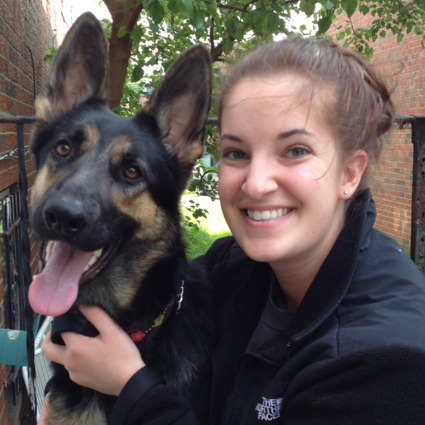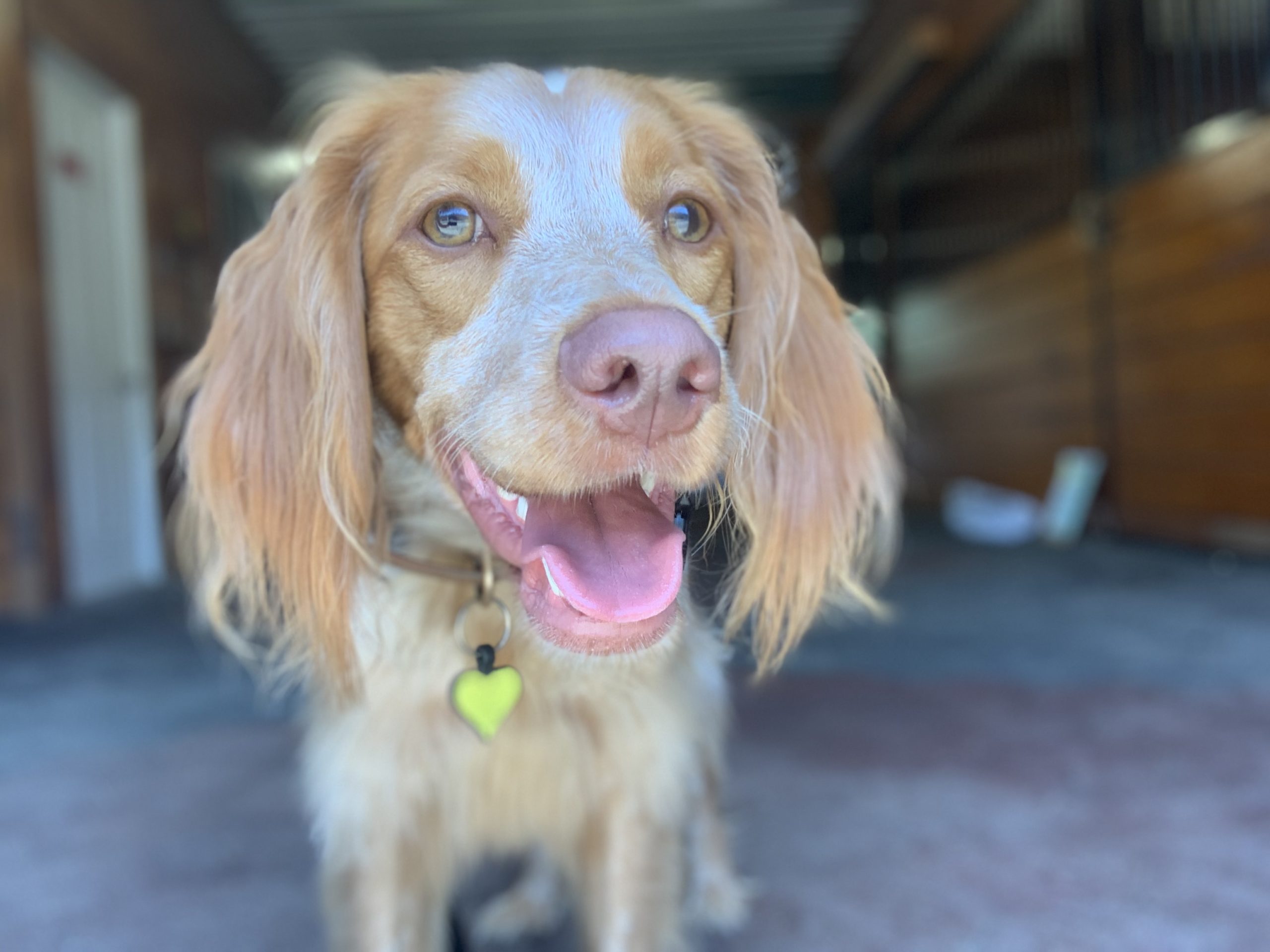written by Kate Lowe CPDT-KA
Philly Unleashed canine students come in all shapes and sizes, both literally and figuratively! Inside and outside of our classes, it’s common for those of us with very sociable dogs to expect every dog we encounter to be both approachable and equally excited about a potential meeting. This would be great in an ideal world, but unfortunately is more commonly not the scenario. Have you ever been in a group class with a dog that was very vocal or needed to use a barrier to continue working? Have you walked past a dog in the city that suddenly began barking and lunging as you and your dog approached? We’re going to talk about what is happening in these situations, and what you can do to help!
Dog reactivity is a common behavior issue and dogs can be reactive towards other dogs for a many reasons. For the purpose of the article, we’ll break it down into two high-level categories: true dog-reactivity and leash-reactivity. Some dogs fear or dislike other dogs due to a lack of positive experiences with other dogs, a significant bad encounter (like an unprovoked dog bite) or poor socialization when they were younger. These dogs are barking and lunging to control the space around them as well as the actions of any dogs in that space. This can be defined as true dog-reactivity.
On the other hand, some dog-reactive dogs actually love other dogs so much that they display barking and lunging out of frustration from being held back by a leash. These dogs tend to do well with dogs when the restraint is removed, like in off-leash dog parks or a backyard. They can be categorized as leash-reactive dogs, but still appear to be dog-reactive in passing and can find on-leash meetings nerve-wracking.
In all cases, dog-reactivity can be embarrassing for the human at the end of the leash, and just as stressful for the dogs. Through training we can work through reactivity no matter what the cause. However, there are a few things you can do to help a fellow dog lover out. Here are five things to keep in mind if you do encounter a dog-reactive dog in class or out in the world:
1. Do your best not to judge.
Sure, a dog growling, barking, snarling and in general “flipping out” towards you and your super friendly dog may be frustrating, annoying, even scary! However, this is usually no one’s fault. Many times the reactivity can be out of an owner’s control. A lot of reactive dogs have been through a lot of training; try to keep in mind that what you’re seeing may be great strides from where they were when they started.
If you’re in class, it is also possible that you could be witnessing a person’s brave first attempt at training, and getting a handle on the situation. Many people don’t typically hope to own a reactive dog, and in general end up in the situation unexpectedly. Even the friendliest dog can develop dog-reactivity!
2. Keep your distance.
When we are specifically working with dog-reactivity at Philly Unleashed, we work our reactive dogs at a distance from each other in order to keep the dogs under threshold. We plan to gradually move closer to one another with a variety of training cues when both sides are comfortable. The key here is distance. The more space we have away from another dog (or anything the dog is reacting to!), the more likely it is that dog will succeed in remaining calm.
Though it may be tempting to allow your friendly dog to meet other dogs on the street, that same situation can be difficult for a person with a reactive dog due to the lack of physical space. These interactions can happen suddenly, like turning a blind corner in the street, or at a distance, spotting a dog down the block. If you see a dog staring, barking, lunging, or growling, you can make a point to give the affected owner some space to gain control of the situation. For example, you can go in a different direction or safely cross the street. The person with the dog reacting will typically try one of these tactics as well, but support from both sides will generally remedy the situation much more quickly by increasing distance at a faster rate.
Try not to be offended if you see a person with their dog crossing the street, changing directions, or picking up the pace when they notice you approaching from behind. It is most likely their dog is not interested in meeting other dogs and they are preventing the dog (and themselves) from experiencing an unnecessary stressful situation. Be mindful and see if you can pick up on these cues from other people, and their dogs, during your daily walks.
In class, please remember to not let dogs meet on leash unless indicated by your instructor.
3. Be safe and communicate.
First, keep a safe, secure handle on all leashes at all times. Try and leave a area of about six feet between dogs. This can help ensure a safe space is honored.
Second, don’t be shy about communicating with the other humans around you. Before our dogs greet one another, be sure to clearly ask “Can my dog say ‘Hello’?”. It sounds simple enough, and can make a big difference! If the person says “No”, respect that the answer is coming from a place of safety for both dogs. It is easy to assume someone may act aloof, but it is more likely they are avoiding a situation that would make class less enjoyable for all those involved.
Out in the world, feel empowered to ask fellow dog owners on the street if dogs can say “hello” at a distance rather than assuming a face-to-face meeting can happen. Even if a dog looks like they might be friendly with other dogs, the best thing to do is always ask first.
4. Leash up your dog.
One of the absolute toughest situations for a reactive dog owner is an off-leash dog barreling in their direction. Even the friendliest dog can be a great source of stress. Usually, people with reactive dogs will steer clear of legal off-leash dog areas (like dog parks), especially if their dog is reactive even without a leash on. However, these dogs still need to get their day to day exercise! For this, our reactive dog owners choose places where they can walk their dog and expect other dogs to also be on leash. The city (outside of designated dog parks) should never feel like a dangerous situation for a reactive dog. By respecting leash laws, we can allow for all dogs to feel safe in our all-purpose public parks and sidewalks.
Practicing a solid recall like “Come” or “Touch” in highly distracting situations can be particularly helpful when you do need to leash up your dog.
5. Be patient.
Though it may be easy to temper an in initial impression of a reactive dog with understanding, it can be harder over the long term to get used to running into your neighborhood reactive dog or seeing one in class. Though it can be frustrating, remember that we’re all in this together and use these situations to your advantage! How can we reframe these this? We talk in class to great lengths about strengthening our cues around distractions, including other dogs. Working on your dog’s focus and “leave it” cue, while another dog is working through dog-reactivity, will only make you and your dog’s training much stronger. If your dog is incredibly friendly, not being able to say hello to every dog can be one of the hardest behaviors to learn.
Encountering a dog-reactive dog can be stressful and surprising, especially for people who have never had to work with it themselves. By educating ourselves on where reactivity comes from and how you can help your fellow dog owner, we can build a stronger, more understanding dog training community. Ask your trainer if you have any further questions about dog-reactivity or if you’d like to learn more about our specific training options for dogs who may be exhibiting these behaviors.


